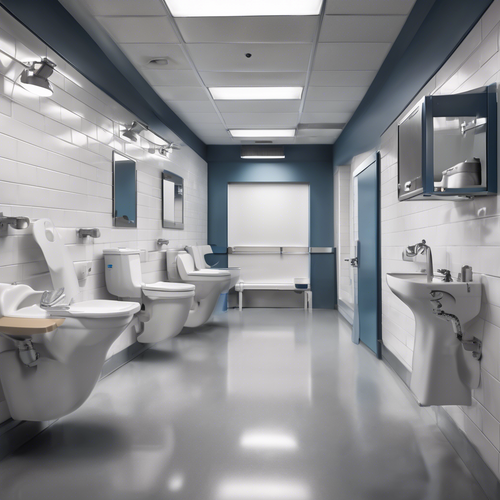Mastering the Matrix: Essential Tips for Managing Commercial Sanitation Equipment Maintenance
In the grand symphony of commercial cleaning, sanitation equipment stands as the heavy brass section: critical, powerful, and capable of producing both beautiful melodies of cleanliness and horrendous cacophonies of chaos when neglected. Yet, maintaining this equipment often feels like navigating a maze with no exit. After all, keeping sanitation tools in top shape is as crucial as a conductor ensuring their orchestra stays in tune—after all, no one wants a rusty tuba blaring away in the middle of a delicate sonata. 🎺
The Foundation of Maintenance: Understanding Your Equipment
The first step in this maintenance dance is to comprehend the various instruments in your sanitation toolkit. From floor scrubbers that glide like ice skaters on a professional rink to industrial vacuum cleaners that suck up dirt with the ferocity of a hungry lion, understanding each piece’s mechanics is essential. Reflect on this principle: a pilot wouldn’t take off without knowing their aircraft, would they?
Invest Time in Training: Just as a musician practices scales, ensure your staff is well-trained in the use and care of each piece of equipment. Periodic workshops can transform novice cleaners into master technicians.
Routine Maintenance: The Key to Longevity
Picture your sanitation equipment as an antique car: charming, with character, yet requiring regular maintenance to keep its engine purring. The temptation to skip routine check-ups might be strong, but the fallout resembles neglecting a plant—eventually, something withers. 💧
- Daily Checks: Implement simple daily inspections before and after use. Check for wear and tear, accumulated dirt, and functionality. A clear-eyed inspection can prevent minor issues from blossoming into full-blown equipment crises.
- Regular Deep Cleaning: Just as we scrub the floors, our machinery needs attention too! A deep clean of equipment ensures longevity and prevents contamination. Dirt hiding in crevices can lead to malfunctions and inefficiencies, not unlike finding a stubborn stain on a pristine shirt.
- Lubrication and Replacement: Oil those squeaky wheels, replace filters, and change out any worn-out parts. Failing to do so is like using a dull knife; it may seem manageable at first, but the effort eventually leads to frustration and reduced effectiveness.
Documentation: Your Unfailing Compass
Imagine embarking on a journey without a map—foolhardy, right? In the same vein, keeping meticulous records of maintenance can guide you like a compass. A maintenance log doesn’t merely collect dust; it serves as a historical ledger of your equipment’s lineage. 📜
“Documentation is not just a chore; it’s an investment in your operational sanity,” says Carla Hill, a commercial cleaning technician. “A well-kept record reveals patterns, helping anticipate failures before they arrive.”
Understanding the Environment: Adaptation is Key
Not all environments are alike, and neither is the impact each has on sanitation equipment. A bustling restaurant will present different challenges than a corporate office. Weather, foot traffic, and the type of contaminants involved can all influence maintenance frequency. It’s much like artists adapting their techniques to different canvases. 🎨
- Adjust Maintenance Intervals: Sites with heavy foot traffic may require more frequent servicing than quieter venues. Monitor usage and performance carefully, adjusting your schedule as needed.
- Be Mindful of Terrain: Equipment used outdoors faces unique wear-and-tear challenges. Consider this: the path less traveled may reveal an unexpected pothole, leading to a breakdown. Assess surfaces regularly to mitigate risks.
The Bottom Line: Balancing Costs and Benefits
In the world of commercial sanitation, every decision carries financial weight. Striking a balance between maintenance costs and equipment longevity is the golden mean to masterpiece execution. Follow this wisdom: a proactive investment in your equipment’s health will yield dividends in operational efficiency and cost savings over time.
Ultimately, well-maintained sanitation equipment becomes the unsung hero of your establishment. It works behind the scenes, ensuring operations run smoothly while safeguarding the hygiene that workers and patrons alike deserve. The best part? Investing in maintenance means fewer surprises, less downtime, and happier employees—much like hosting a flawless concert that leaves an audience cheering for an encore. 💼
